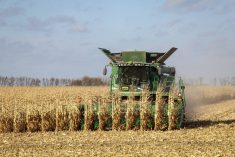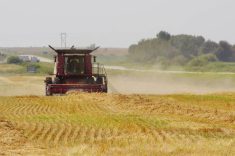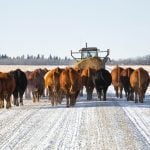Kill it with fire.
That was the gist in 2018, after a photo of post-spray kochia in Saskatchewan made the rounds on social media. The image showed a swath of dead, brown plants. That made the single, green plant right in the centre stand out even more.
There was a collective recoil from farmers in the comment section.
Read Also

Manitoba Ag Days 2026 coming up fast
Canada’s largest indoor farm show, Manitoba Ag Days, returns to Brandon’s Keystone Centre Jan. 20-22, 2026. Here’s what to expect this year.
Why it matters: Glyphosate-resistant kochia has been found in Manitoba fields for the last decade. Other herbicide groups are now challenged or considered functionally useless against the weed.
In 2011, glyphosate-resistant kochia reared its head south of Lethbridge, Alta. That changed the game, according to Charles Geddes, a weed scientist with Agriculture and Agri-Food Canada (AAFC).
“Kochia is a unique weed because of its biology that leads to resistance,” he said. “That results in a high rate of evolution in response to selection pressure and, in this case, the selection pressure is the recurrent applications of a herbicide.”
Glyphosate works by disabling a particular enzyme, EPSP synthase, which is like a workbench within the plant cells which builds important amino acids so the plant can make tissue and grow. Once the enzyme is done, it passes the new amino acids along, picks up more material and goes to work again.
When glyphosate puts that enzyme out of action, the plant can’t build tissue and it dies.
Kochia has found an unusual way around that, according to Geddes.
“They’ve increased the number of copies of that target site, and as you have more and more copies of EPSP, you need more herbicide to fill those copies,” he said. “Once you reach a certain threshold, you have too many copies for the field rate of glyphosate to control that specific species.”
By 2018, one study by Geddes had found that 58 per cent of sampled kochia in Manitoba showed glyphosate resistance. That study was later referenced in materials from the Manitoba Crop Alliance.

Resistance scope
The weed had already bolstered itself against other chemistries by the time glyphosate resistance entered the picture. Group 2 resistance was confirmed back in the late ‘80s. Today, experts consider all kochia in Western Canada to be Group 2 resistant.
There have also been issues with Group 4 herbicides. The same study referenced by the Manitoba Crop Alliance found that one per cent of sampled kochia in Manitoba had overcome Group 4 products as of 2018.
In 2021, the first signs emerged that Group 14 control might be sliding. Kochia at one site in Saskatchewan stood up against field rates of saflufenacil, farm media later reported.
That was echoed earlier this year just south of the international border. In January, North Dakota State University announced they had found a number of kochia populations in 2022 that did not respond properly to Group 14 herbicides carfentrazone and saflufenacil.
Heavyweight defence
Kochia has two cards up its sleeve that make it a tough player. First, it mutates fast and effectively, so it adapts quickly to a single obstacle like a herbicide. Second, it travels well and drops mutated seeds all over the place.
“If you think of a western movie where there’s tumbleweeds blowing around, that is kochia,” Geddes said.

A tumbleweed is one of Mother Nature’s ingenious mechanisms for plants to travel long distances and drop seeds. When the plant is mature enough, the stem breaks near the ground and is blown by prevailing winds.
Spreading seeds means more plants, more plants means more seeds, and so the cycle goes.
In Manitoba, tumbleweeds wouldn’t have looked out of place in recent years.
Hot, dry conditions are good news for kochia. So are salinity problems, often also brought on by drought.
All of those conditions could describe Manitoba’s growing seasons from 2018 to 2021, particularly in the critical drought of two years ago.
Provincial weed specialists highlighted concerns with kochia during those dry years.
Changing the game
Herbicides are a game of chemistry, but weeds have countered with genetics and ecology. Geddes his fellow researchers are now figuring out the new rules, and the game they’re playing is integrated weed management.
“There’s a shift towards more complexity in a weed management system because whenever something is simplified, we see rapid evolution in response to that particular practice,” he said. “It’s all about including that complexity, but in a way that is practical for a farmer to do.”
Over the last few years, the industry has been looking at tank-mixed herbicides, thinking that if the weed can dodge one chemistry, the other might take it out. But some strains of kochia can tolerate glyphosate, as well as 2,4-D—a Group 4 auxinic herbicide often used to kill broadleaf weeds.
In his research, Geddes looked at two other Group 4 products.
“We did a study where we mixed fluroxypyr and dicamba together to manage the auxinic-resistant kochia,” he said.
That was effective even in weed populations resistant to fluroxypyr and dicamba when applied alone.
This has become standard practice. Instead of hitting the weed with one big hammer, it is hit with several small ones coming from different directions. This makes it harder for the weed population to develop genetic resistance to a particular chemistry and it preserves and prolongs herbicide efficacy.
Still, it’s a stop gap. The next step is to look at the biology of the weed, find its ecological weakness and try to exploit it through field management. If the weed does a genetic end-run around the chemistry, maybe it can be taken out at the knees biologically.
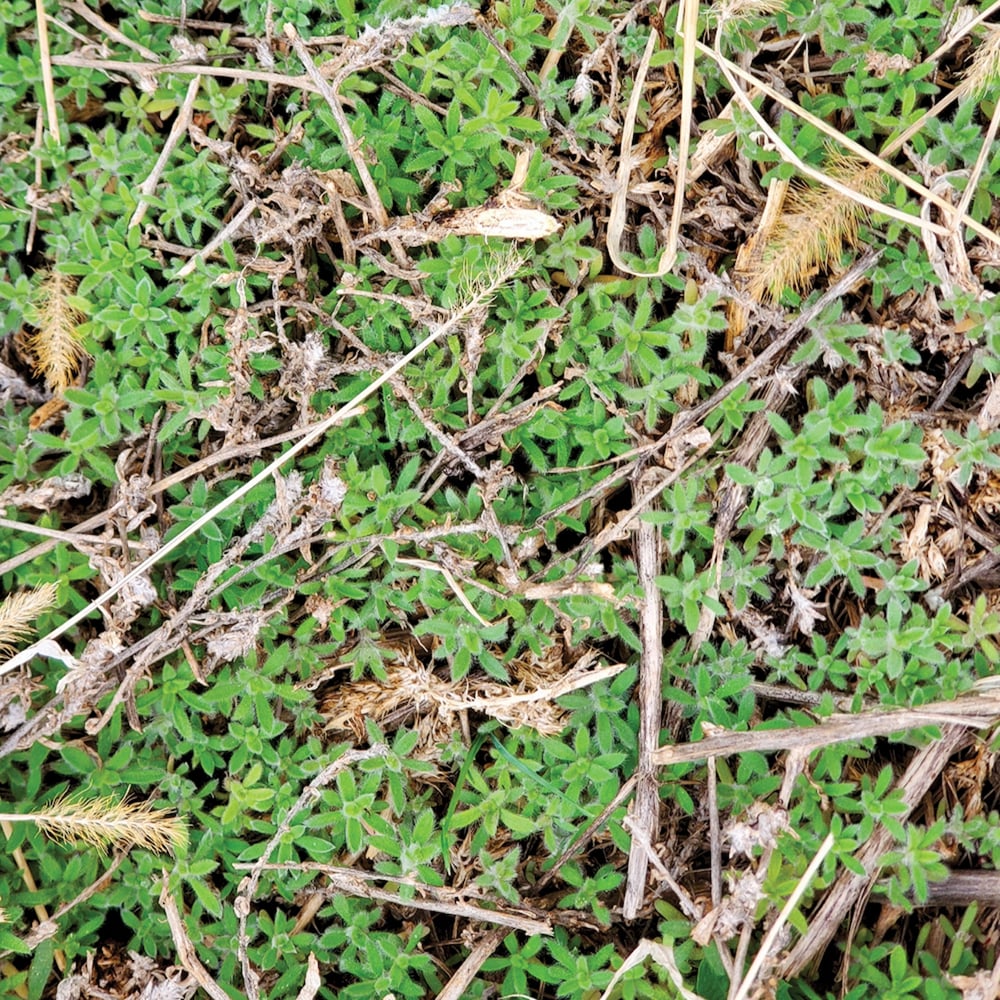
“The weak spot for kochia is its seed bank persistence,” Geddes said. “Seeds of different species tend to survive for different lengths of time in the soil and for kochia, it has relatively little dormancy, so seed tends to survive for only about one to two years.”
The trick is to keep the kochia from producing seeds by providing competition. Geddes looked at this with common rotations.
“We had a five-year project where we looked at managing kochia in a crop rotation of wheat-canola-wheat-lentil,” Geddes said. “Lentil was the weak link because, on top of glyphosate resistance, all kochia populations that we find on the Canadian Prairies are typically Group 2 resistant as well, and Group 2 herbicides are essentially the only option for kochia management in lentil.”
Researchers prepared a field with nine-inch row spacing and doubled the recommended seeding rate. They compared results with a wider row space and the standard seeding rate. The idea was to create a more competitive crop that could out-gun the kochia.
“By combining those two practices, we were able to decrease kochia biomass by 80 per cent across the entire crop rotation and we decreased the kochia seed bank by 63 per cent,” he said. “The strategy is to get at least two years of very effective weed management. If you can keep kochia plants from producing seed for a couple of years in a row, that goes a long way.”
Another trial looked at out-competing kochia by putting winter cereals in the rotation. One year in four, researchers grew winter wheat instead of spring wheat.
“When you compare those two, we reduced kochia biomass by 64 per cent overall in the rotations that had winter wheat instead of spring wheat,” Geddes said.
“The winter wheat is more competitive because it’s already established, while kochia is just germinating and emerging. But also, depending where you are, winter wheat tends to be harvested around the time when kochia is just starting to produce seed, so you effectively decapitate those kochia plants and help prevent seed production that way.”
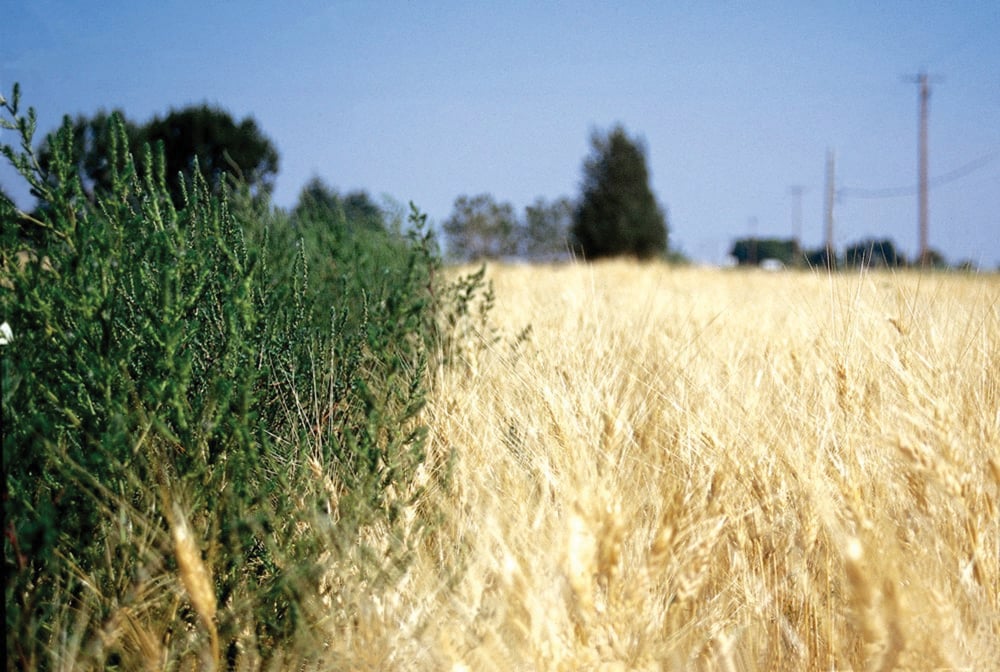
Kochia survival was also studied in a stand of perennial alfalfa and meadow brome. The forage was cut two or three times a year, which reduced the kochia population by about 99 per cent. But the seed bank remained.
“For some reason, it didn’t decline at the same rate even though we were helping to prevent seed production by cutting the kochia off multiple times per year,” Geddes said.
“We don’t know the exact reason why there was still a seed bank there but we’re continuing that work here. After the fourth year of the perennial, we broke that up and we’re going back into an annual rotation, so it will be interesting to see if kochia remains in those plots with the annuals.”
None of this means it’s time to give up on herbicides. They still play an important role in weed management, but with more methods available, farmers can play the biological game too.
“It’s inevitable,” Geddes said. “We’re seeing herbicide resistance growing as far as the number of cases that we’re seeing, the number of new cases that we’re finding and the impact that it’s having on farms across Western Canada.”



